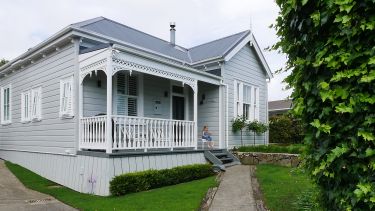
How Much Does it Cost to Renovate?
Here's a short article on just that topic, so you can take the first real step in planning that dream reno within your budget
The thing is, the cost of your renovation depends entirely on what you want, but it needs to be something you can afford. We understand that for our families it can feel a little like a 'chicken & the egg' situation. What should come first?
The designing of your renovation so you can have it priced?
OR
Setting your budget so you can design your renovation to suit?
In our experience it is far safer to decide what you are comfortable spending on your renovation, then make a plan.
We suggest going armed with a firm budget when meeting your builder and architect, then they will have a clear understanding of what can be designed within the budget in order to complete the project.
This will directly relate to the design you receive in your hands, reflected in:
- The size of the renovation, because in this situation, size does matter.
- The complexity and materials used for the structure - steel or timber? This impacts costs.
- Manpower: the hours of labour & project management required to complete the project.
- Council requirements for things like stormwater and drainage, plus zoning considerations.
- The big-ticket items and their materials: cladding, foundations, roofing and flooring.
There are so many decisions to be made and matters to consider in the early design stages which will majorly affect the cost to complete your renovation project.
Lucky as we are to bring so many renovation dreams from concept to reality, we hate to think of the number of projects that don't ever reach the stage of a spade in the ground. Often, it’s because they were created with the approach of 'this is what we want' with no end dollar amount placed on it. So, please consider this.
Everybody has an amount that they are comfortable spending on their renovation, and it is determined mostly by their own “why” and their personal situation. Said amount will be different for everybody. Here are some common factors that we think our customers should think about when setting their budgets:
- The current value of the property.
- How much they can comfortably borrow and service.
- How much money they have saved and available.
- Whether the improvements will add value - and if so, how much?
- The possibility of future-proofing the investment with a rental return.
- Creating more space for a blended family and joining incomes.
- Proximity to learning facilities and amenities, and the possibility of taking on boarders.
After all, is taken into consideration, you should have a budget to state when you are approaching your builder/architect/draftsman.
Your builder will be able to provide ballpark pricing when the plans are council ready. Once the plans are approved, you would then receive more solid pricing which could be a fixed price contract or a charge up. Either way, you should have a contingency budget in play with your builder.
What's that for and why would I need it, you may ask? The contingency budget is a safety net to cover things such as:
- Any variations to your plans. It's pretty common for clients to change their minds once the renovation starts.
- Unexpected findings (common in older homes) such as hidden rot in joists or timber structure.
- Shoddy D.I.Y that has taken place by previous owners and hidden away.
- Volcanic rock breaking, very common in Central Auckland with such close proximity to Mt Eden, Mt Albert etc.
- Walls and floors that aren't level, straight or square.
- Sub-floor joists needing repair or replacement.
- Outdated and inadequate drainage and stormwater.
We don’t say it to spook you but to prepare you!
There can be any number of unforeseen issues that arise when undertaking a renovation. See our Bungalow and Villa Renovations Guide to find out more about what you could encounter.
The bumps in the road listed above are why we suggest a contingency fund of at least 15% set aside to deal with these challenges. This prevents you from feeling overwhelmed or having to delay or downsize your renovation. Any money left in the contingency fund at the end of the renovation is then a bonus to put against your lending or towards that lush new sofa you had your eye on.

